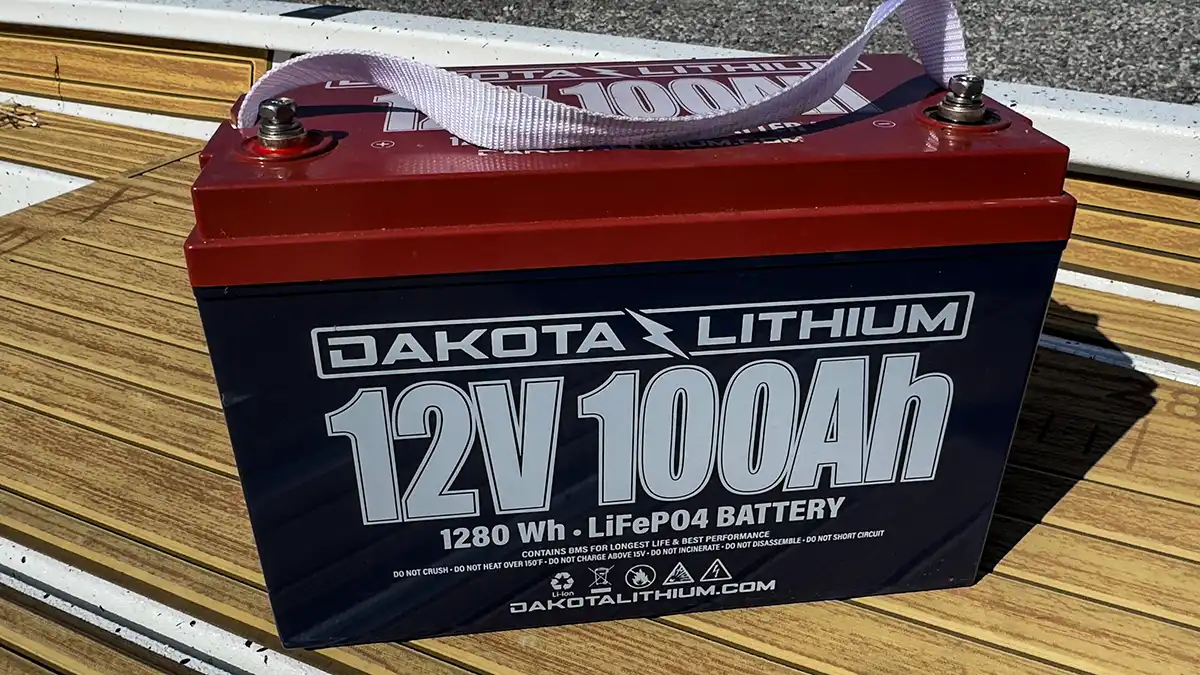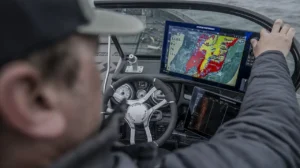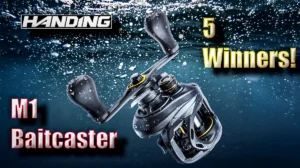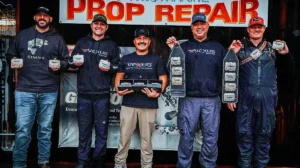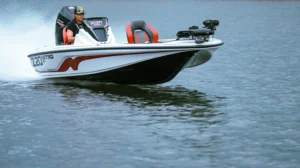Most of us grew up fishing with lead acid batteries in our boats as our fathers before us did. The new generation of anglers, however, are coming up in the age of lithium marine batteries. Yet it’s somewhat telling how little most anglers know about lithium power. They have seen the literally “inflammatory” stories of the early days of lithium power in boats and have shied away from lithium power. Or they got lithium powered batteries but don’t understand the technology so they are not using it correctly or optimizing its longevity. The lack of people that know about lithium marine batteries and how best to use them caused me to put this together.
I recently wrote an in-depth marine battery guide that covered a bunch of the best lithium batteries in the marine space this year as well as some of the more used lead acid and AGM batteries. I am a big proponent of lithium power for no other reason than the longterm clean power they provide. But I also had a ton to learn about the technology, how they are built, how to maintain them properly and what things can cause anglers issues.
So I reached out to several of the owners and engineers at 4 or 5 of the top companies and had them tell me what they’ve learned over more than a decade of building and refining the technology that is of utmost importance to the owners of these products. The only purpose of this article is to help you make your expensive purpose last as long as humanly possible and have the least amount of hassle with your investment.
LITHIUM POWER IS NOT THE SAME AS LEAD ACID POWER
Lithium batteries are made very differently than lead acid batteries. For starters their cells are all encased. So their is no acid bath to maintain at certain fluid levels or worry with burning up and drying out. The cells in the battery also have controllers called Battery Monitoring Systems (BMS) that monitor and maintain their usage. These controllers are often what varies among manufacturers with many offering Bluetooth compatibility and apps to know how your batteries are doing at all times as well as other add-on features.
Generally inside of a lithium battery there are multiple cells that make up the total voltage. So say in a 12 volt battery like a Dakota Lithium 12V 60Ah battery, you have 4 cells that are each 3.2 volts, to make a total of 12.8 volts for your battery. That’s why you often see 12.8 or 13.2 or something of that nature on your graphs instead of a flat 12 volt reading you would expect.
Manufactures like PowerHouse Lithium actually offer 16-volt batteries so they will use 4 cells with 4.2 volts each. So fully charged your battery is hitting 16.8 volts to start the morning. Some folks are afraid to run a 16-amp battery on their boat for fear it will mess up their electronics. Humminbird’s newer units are actually rated for 20 volts. Most Garmin units are rated for 18 volts, with their 86xx series actually rated for 32 volts. And finally Lowrance is rated for 17 volts. So all of the current graphs are actually rated for higher voltage and this is largely due to the fact that technologies like 360, side scan and live imaging show you more detail with a higher voltage.
Now with lithium batteries, it is important to know your system is only as good as your weakest battery, and your weakest battery is only as good as your weakest cell. It’s also important to know that you never want to deplete your battery fully as the BMS will often put them to sleep when that happens as a precaution and you have to wake them up. Some newer BMS systems have auto wake up features. But most of the time just hooking the battery to a lithium only charger, will automatically wake them up.
In the early days of lithium power, guys would hook incorrect charges to lithium batteries, overcharge them and blow them up. That hasn’t been an issue in more than a decade because the BMS systems monitor that and dedicated lithium chargers are way improved now.
I have a 36V charger from Dakota that is an 18Ah and it’s a beast of a charger. It will cycle a charge in my trolling motor batteries and have them ready to go in an hour or two. It’s crazy how fast these things charge.
Lithium battery chargers work exactly the opposite of conventional chargers. Most conventional chargers are waiting for an input from the battery of usually at least 8 volts. Whereas a lithium charger is not waiting to see the charge back. It’s on all the time. That’s why you hear stories of guys having to “jump their battery” or hooking it to another charger so that their conventional charger sees current coming in to activate.
Nowadays you can just hook your depleted lithium battery up to a dedicated lithium battery charger and it will start charging it. Lithium batteries do not have “memory” like lead acid batteries do. They can sit partially charged or fully charged for a long time with no degrade in performance. They do have a limited number of charge cycles. And that is also a place for confusion we will address later.
UNDERSTANDING AMP HOUR VS VOLTAGE
Before we get too far into the weeds on maintaining lithium batteries, lets cover some basics first that will help as we go further into this resource. Lester Miller, owner of MillerTech Energy spent a bunch of time going through the ins and outs of lithium power with me. MillerTech is a big player in the marine space and an even bigger player in the solar energy industry. So they have a vast knowledge and experience with lithium powers and how it’s best used, and maintained with the least amount of issues. They also offer some of the best service in the industry for customers which is another important factor to keep in mind.
The biggest confusion point for anglers comes in knowing Voltage and Amp hours and what they need to know to choose the right battery. Now a good company like MillerTech is going to work with you to figure out your system and how you fish to help pick the right battery for your boat and your fishing. They are not going to just sell you the most expensive battery.
Voltage is a measurement of overall power and amp hours are a measurement of overall run time. So say your unit or Livescope requires at least 10 Volts to operate but you want to run it all day. So you need that 12 Volt battery fully charged to even use the unit. But as you use it, it’s drawing a certain amount of amps per hour. For some small graphs it might be only 1 amp an hour. So a 50Ah battery can run that small graph for days. However if you have your live wells, two graphs, side scan transducers, lights, Power-Poles all running off that one battery well you might be drawing 10 amps an hour. Now that same battery is only going to get you through about 5 hours.
That’s what a good lithium battery provider will do. They will ask you about your system and then make a recommendation based on their best estimates with their known experience with the draw on certain items on a boat (like a trolling motor, fish finder, imaging transducers, live wells, lights, Power-Poles, and more).
Well how can you achieve more voltage or more amp hours is the next logical question. That’s where we get into the discussion of Serial virus Parallel rigging of multiple batteries.
SERIAL VS PARALLEL FOR VOLTAGE AND AMP HOURS
Basically speaking in terms of lithium power, if you want to increase voltage, you run two or three batteries in series. If you want more amp hours, you run two batteries in parallel. Where a lot of confusion comes in, even among professional anglers, who have been doing this a long time, all we’ve ever had available to us was 12-volt batteries. Now with lithium batteries, you can buy a 24-volt, 36-volt and 48-volt battery if you want. And their are pros and cons to that of course.
Miller talked about one angler he worked with who could just not get their mind wrapped around wanting to run three 12-volt batteries in series to get to 36-volts instead of just running a 36-volt battery.
“BMS are better equipped to run in those voltage environments they were designed for,” Miller said. “What I couldn’t get the angler to understand is that a 36-volt battery’s BMS was built to operate at maximum efficiency in a 36-volt environment. And you have a lot more margin for error and depletion with the battery still operating fully in a 36 volt battery than you do three 12-volts running in a 36 volt system.
By that I mean, a 12-volt battery has a BMS that is optimized to run in a 12-volt environment. And there is a lot less ‘run-up’ there. If your battery has a problem with one cell. You just dropped to nine volts and your 36-volt system is now only as good as your worst battery which is now just running at 9 volts so your system just went to 27 volts. If that battery goes down, your trolling motor is probably not going to work. With the 36 volt battery, you are not going to have near the issues like that. And if you run a parallel 36-volt system you can run for long days, much cleaner and with a less issue-laden 36-volt system because the system is optimized to run in a 36-volt environment.”
After speaking with Miller, I upgraded my own system from three 12-volt batteries on my trolling motor to two 36-volt batteries in parallel. I use my boat all day, and when I plug it into my 36-volt Dakota Lithium charger, I am charged usually in less than 2 hours.
Similarly, I have a Precision Power Lithium 12-volt 100Ah battery that only runs my two graphs and my Livescope. And people ask me all the time why my 8616 screens look so clear and sharp. I have a a Sea Clear Power run wired direct to cutoff switches at the battery. So I’m getting strong clean power all day. If I start fishing super long days, I may go to a parallel system to have constant power for longer days or upgrade to a battery with more voltage to see farther into the water..
Terry Brown runs a 16-volt PowerHouse Lithium battery for his graphs and has some of the cleanest screens you will ever see. Shaye Baker runs a 24-volt MillerTech battery on his trolling motor and loves the all-day power it provides.
Obviously the combination of voltage and amp hours affects the price of the batteries more amp hours and more voltage in a single battery increases the price significantly. But keep in mind you’re talking about powering your boat with these batteries for a decade. But we should delve into the longevity of lithium power along with other issues that might arise as you become a long term owner of lithium power.
ISSUES TO UNDERSTAND IN LITHIUM BATTERIES
Lithium power is mostly full proof from my experience with it over the last 4 years. They biggest issues come from charging in freezing environments, water getting in the batteries, letting the batteries deplete all the way and figuring out when and how much to charge them to avoid using up your charge cycles too fast. So lets tackle all of these here and add some engineering wisdom to some of the myths and opinions that I have seen circulating out there that just are not right.
Freezing Temps
You’ve probably seen the posts or heard people say to never charge your lithium battery in freezing temperatures. That’s actually not bad advice but probably not for the reasons you think. The cells do have liquid in them and that can freeze. But the issue is the build up of water through condensation. Water is maybe the worst thing for a lithium battery cell.
The issue happens when charging a frozen or very cold battery causes the battery to warm up rapidly as it takes the charge from the charger. The rapid warm up of a cold battery causes it to build up condensation inside and that is the problem. It’s not that charging a frozen battery hurts it. It’s the fact that the cold hot cold hot cycle of charging and cold elements causes condensation to form. And that’s a very bad thing.
Miller recommends taking the batteries inside in the winter and charging them. Or keeping the boat in a warmer (non-freezing) storage area and not charging in the coldest environments. PowerHouse Lithium, actually offers the ability to charge down to 23 degrees because of the internal build in their batteries but even they recommend not charging much in the coldest environments as repeated charging at sub-freezing temperatures can reduce the cell life longevity.
Water in batteries
Water causes the biggest issues in lithium batteries. Water causes a volatile reaction when it mixes with lithium called effervescence. It causes hydrogen gas to release and the reaction is thermogenic so it causes a lot of excess heat. That’s why the top lithium marine battery makers create IP6 or IP7 rated waterproof batteries to keep 100% of the water out of the batteries. Not only to prevent the reaction but to prevent corrosion, short circuits to the BMS and increased resistance and electrolyte leakage from the cells.
Creating safe batteries is priority number one for most of the manufacturers we talked with. While there are still some in the insurance world who wish to ban lithium power on watercraft, the risks have thus far been mitigated and for the most part eliminated by today’s highly evolved lithium battery options.
Depleting a battery too much
Running a lithium battery down to zero is also a bad thing. It’s not something you have to worry about as much now with today’s much more refined lithium marine batteries because the BMS sets a cutoff voltage and puts the battery to sleep (i.e. shuts down your system) to prevent it from ever getting too low. Not to get too technical on what happens when a lithium battery full discharges, but basically there is a chemical breakdown that occurs and the battery life of the battery is reduced. So your 10 year battery won’t last 10 years if it were to discharge fully.
While the sleep thing can be a nuisance, it’s fairly simple to avoid and we’ll discuss that in the final section.
Charge cycles
So there are a lot of terms that float around when talking about lithium power. Things like State of Charge and Depth of Charge matter when talking about charge cycles and life span of a battery.
So originally, the thinking was a battery has a certain number of charge cycles before the reaction that happens with the electrodes and the electrolytes has run its course and depleted fully in the battery cells. So because there was a limited number of charge cycles for the battery, many folks told you not to charge your battery after every use to preserve your charge cycles and not limit the life of the lithium battery.
However there are other factors to consider here. State of charge refers to the current capacity of the battery compared to its rated capacity. So an SOC of 100% means its fully charged and an SOC of 0% means its fully discharged.
Depth of Discharge or DOD refers to the amount of discharge in the battery and this can actually be used to increase the charge cycles of a battery. If you only discharge the battery 30% and it still has an SOC of 70%, then your charge cycles go up because they are based on a full charge. So if you are only having to charge it 30% of the way back to full, that’s not a full charge cycle. So you might have 2x or 3x partial charge cycles as compared to the rate full charge cycles.
“I studied the charge cycles and DOD reference materials on the cells we use in our MillerTech batteries and found that if you charge the battery after short uses you will actually get a lot more partial charges out of the batter and your life span might actually increase,” Miller said. “This is again why spec’ing out your system correctly is so important in the beginning. If you have plenty of power and only partially discharge during the day of use, you can have batteries with a lot more partial charge cycles and your system will last longer.”
BEST WAYS TO MAINTAIN YOUR LITHIUM MARINE BATTERIES
Now that you understand how lithium batteries differ from what you may have known from other batteries. It’s worth relaying some more helpful information from Dakota, MillerTech, PowerHouse Lithium and ZPro Lithium.
I have run a mix of lithium batteries in various boats. I have a travel 12-volt Dakota Lithium that I take with me when I’m going to be using other boats like I did at a fish camp this spring in Illinois. I ran a small 12-volt trolling motor. I also have two small lithium batteries that I run in my kayaks. I run a ZPRO 12-volt 50Ah and a Tracker Lithium 12 Volt 50Ah that I run in two different kayaks. I have two 36-Volt RELiON batteries that I run in parallel on my Xpress X21 Pro to power my Garmin Force. I run a Precision Lithium battery as my Electronics battery in that boat. I have a MillerTech cranking battery that I’ve tested as a starting battery but don’t use it currently because it will void my Yamaha Warranty.
I’ve also tested several others that you can see in the Best Marine Battery Guide.
So I’ve been around a lot of Lithium batteries. I’ve used a lot of chargers. I’ve ran a lot of different configurations and at first it can all seem confusing. But the crux of it is to understand your boat, your system needs and how you fish. Those all factor into how much voltage and Amp hours you need and from there you can figure out the best configurations.
To me getting that right is the best way to make sure you have batteries that last a lot of years. If you get too small a battery and you are running it nearly dead every fishing day, then that battery is not going to last as long. But if you run an adequately powered battery for your system and are charging it regularly after partial cycles, your batteries are going to last a long time.
Then take a system like the PowerHouse Lithium where their batteries are monitoring the cells and when it starts seeing one of the cells operating outside of parameters, it alerts you through the app to contact PowerHouse Lithium for support and you send them the screenshot and they make a determination if they should warranty replace the battery or not. That next level of preemptive support is unheard of with battery power in boats.
And Support is another huge piece to making sure the investment in lithium power is worth it. If you spend a lot of extra money on a large lithium battery, than you should reasonably expect a high level of support. That’s why companies like MillerTech, PowerHouse, Dakota, Precision Power and ZPRO are so well liked by pro anglers and avid fishermen alike. Because when you dial the phone, someone answers and can help with your problem.
So it’s definitely worth it to go with a reputable brand that has high levels of support at your disposal.
Some other simple ways to keep your batteries operating at max capacity for as long as possible would include the following:
- Avoid charging your batteries in extreme cold or extreme heat
- Charge your batteries after every use so they only use partial cycles
- Keep your batteries in dry compartments and secured
- Use bigger batteries with more capable BMS when higher voltages are needed
- Run your batteries in Series to increase voltage and run your batteries in parallel to increase amp hours
- Use lithium chargers
Also understand that how you use your equipment figures into your power needs. A guy who fishes in current or grass all day will draw a lot more power a lot faster than a guy who uses the same trolling motor to put around on speed 2 or 3 fishing in relatively clear open water. The harder you run a trolling motor the more it will draw. The more graphs you have, the bigger draw you will have. So again understanding the balance between your power needs and the available battery options will allow you a lot years of worry free power.
The days of worrying about your batteries blowing up and the like are long gone if you follow these simple guidelines. The fact is lithium offers very strong, clean power for long periods of time. They offer wide ranges of options to fit nearly any system. Some of the companies like MillerTech, Dakota, PowerHouse Lithium, Precision Power and ZPRO offer high levels of personal support. That can be one of the biggest factors in having a product for 10 years. Do your research, reach out to the companies and they will help you piece together the appropriate power system for your specific boat and equipment.



